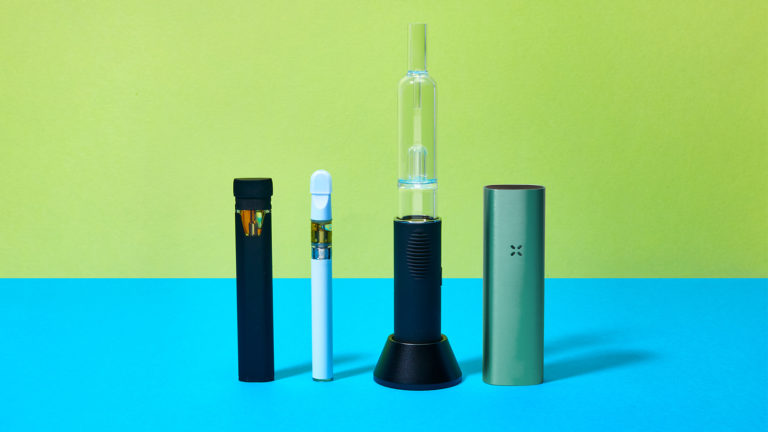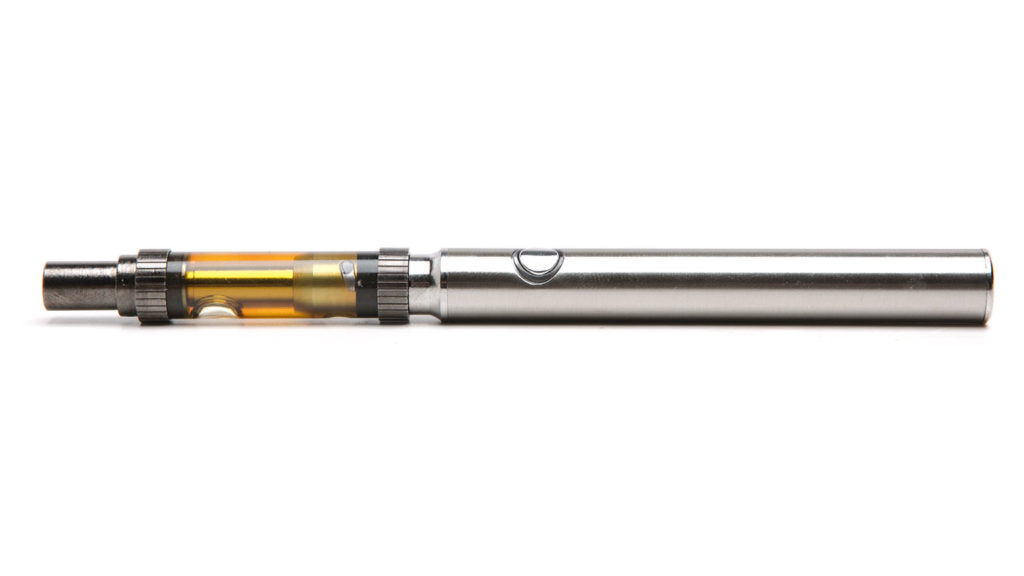A weed vape pen is a handheld device consisting of a battery attached to a cartridge filled with cannabis concentrate. Vape pens vaporize rather than burn cannabis, resulting in vapor instead of smoke. Because of the lack of smoke and the handheld convenience of vape pens, some cannabis consumers prefer vaping over smoking.
Vaping may seem new but it has a long history. Ancient Egyptians used hot stones to inhale vapors emanating from heated herbs, and the shisha, more commonly known these days as a hookah or water pipe, was introduced to India thousands of years ago.
Fast forward to 2003, when Chinese pharmacist Hon Lik, who was trying to kick a heavy tobacco smoking habit, figured out how to vaporize nicotine liquid using high-frequency ultrasonic vibration, and put it all in a device that looked like a cigarette. The first e-cigarette vaporizer was introduced to the US in 2007.
Today's vape pens use a tiny heater to do the vaporizing, and of course, marijuana consumers use a cannabis concentrate instead of nicotine liquid.
Advantages of using vape pens
Vape pens have some advantages over smoking cannabis flower, especially for new consumers.
- They're convenient. Cartridges are small, transportable, and pre-filled with distillate or concentrate. Carrying several of them is much easier than carrying several kinds of flower, and swapping them into and out of the pen is simple.
- They're discreet. Vape pens are often used by tobacco smokers, so they don't draw much attention these days. The smell of vapor is also far less pungent than the smell of burning cannabis flower, so it's less noticeable.
- They may be less harmful. When cannabis is combusted, the smoke that's inhaled contains at least 100 toxins, some of which can cause cancer. Because vaporizers don't heat marijuana to the point of combustion, people who use them aren't exposed to those toxins. Long-term research on vaping doesn't exist yet, but a 2010 study of 20 daily cannabis smokers with existing lung conditions found that just one month after using a vaporizer instead, they had “meaningful improvements” in their lung health.
- They're cleaner. The cartridges are disposable, so there's no sticky resin to clean up. And the only output is water vapor — no smoke, no ash, no mess.
There are also some disadvantages to opting for a vape pen instead of smoking cannabis flower, such as higher prices, fewer strain varieties, environmental consequences, and potential health risks associated with cutting agents.
The anatomy of a vape pen
 Photo by: Gina Coleman/Weedmaps
Photo by: Gina Coleman/WeedmapsImage lightbox

There are four main parts of a vape pen:
- Tank or cartridge: The container for the cannabis oil that will be vaporized. Tanks made of plastic, glass, or steel are refillable. Pre-filled cartridges are used until they're empty and thrown away.
- Atomizer: The heating element that vaporizes the cannabis oil.
- Battery: The rechargeable lithium-ion battery that powers the vape pen and heats the concentrate. Some batteries activate with the manual press of a button, while inhaling activates others. Rechargeable batteries often come with a USB charger included. Disposable pens have a pre-charged battery.
- Mouthpiece: The piece through which vapor is inhaled.
What goes in a vape pen
Vape cartridges are all filled with cannabis oil designed for optimal vaporization using a portable battery. During the distillation process, raw cannabis oil may be stripped of all flavor and aromatic compounds, then mixed with terpenes to reintroduce flavors, and infused with some form of glycol — polyethylene glycol (PEG), propylene glycol (PG), or vegetable glycerin — (VG) to give the vapor extra mouthfeel (thin versus thick, smooth versus chalky, dry versus buttery).
While all legal, lab-tested vape cartridges contain cannabinoids, not all cartridges contain terpenes. Terpenes are organic compounds that give plants their aroma and flavors. Raw cartridges are vape cartridges that do not contain any additional cutting agent or terpenes, just the pure cannabis oil.
The reintroduction of terpenes is common in distillate-filled cartridges, as the distillation process removes the natural plant terpenes and results in an odorless, flavorless, viscous liquid. Some extractors have mastered a technique that allows them to remove the terpenes from the plant during the distillation process and reintroduce them prior to filling the vape cartridges. These cartridges are known as strain-specific vape cartridges that use cannabis-derived terpenes to retain the same aroma and flavor of the plant that the oil was derived from.
It's also common for cartridges to be filled with naturally derived terpenes to create exotic flavors that smell and taste like fruits and candies. The reintroduction of terpenes after extraction allows manufacturers to create countless cannabinoid and terpene combinations to suit a variety of needs. These terpenes can also change the viscosity and color of the distillate in the cartridge.
Some THC vape juice contains cutting agents similar to those used in e-cigarettes, which are added to improve vape cloud production and the mouthfeel of the cartridge. The most common cutting agents include PEG, PG, and VG.
The Food and Drug Administration (FDA) has labeled these various cutting agents as safe for human ingestion, but there are still concerns about what happens when these compounds are heated and inhaled. A 2010 study published in the International Journal of Environmental Research and Public Health, concluded that inhaling PG could potentially exacerbate asthma and allergies. Additional research also suggests that, when vaporized at high temperatures, both PEG and PG break down into the carcinogens formaldehyde and acetaldehyde. That's why it's important to always vape at a lower temperature, if possible.
While more research is required to fully understand the effects of inhaling these cutting agents, you're best off avoiding them and shopping for raw vape cartridges.
How do you shop for vapes safely?
The safest thing to do is to avoid any additives whatsoever, especially after the e-cigarette, or vaping, associated lung injury (EVALI) outbreak in 2019. Most of those affected had purchased illicit or low-end vape pens or cartridges to which the vitamin E may have been added because it's similar in appearance to THC oil and would allow the manufacturer to produce more vape juice with less THC oil.
In addition to watching for added flavors and terpenes, also be wary of vapes that contain nicotine and propylene glycol. One way to avoid encountering additives is to refrain from shopping on the black market where vape cartridges could be counterfeit. Instead, go to a licensed dispensary to make all your cannabis purchases.
Even if you are shopping at a licensed dispensary, you still need to do some research into the product you are purchasing. Since states don't always require ingredients to be listed on vape cartridges, certainty can be difficult. Even experienced budtenders may not know. Check brand websites and packaging carefully since brands that use 100% cannabis and nothing else usually make that fact known on their site and packaging. Purchasing vape cartridges from licensed retailers, avoiding additives, and carefully reading the packages should mean you're getting safe, authentic products.

